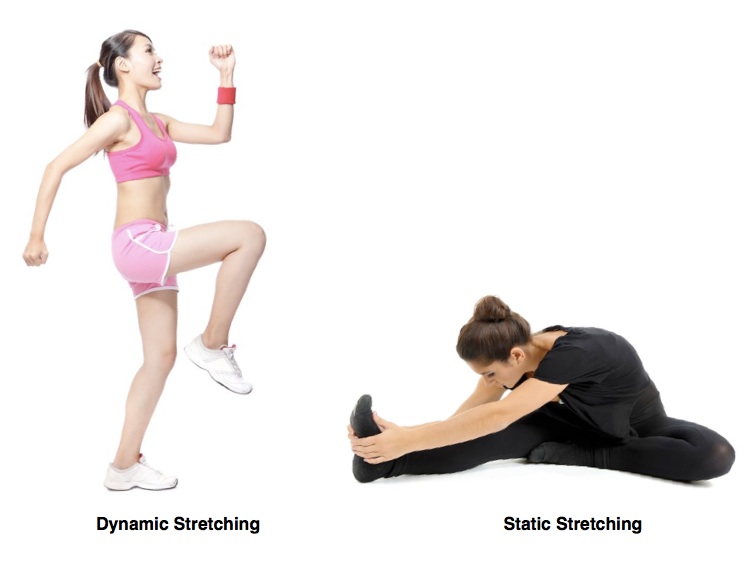Maximizing the Benefits of Stretching

Tips for Maximized Stretching
- To gain flexibility you need to stretch daily.
- Don’t be too aggressive when you perform the dynamic stretching. Fast and quick movements can cause damage to the soft tissue.
- Static stretch for 30 seconds or more during the post –exercise time period.
- Never experience sharp pain when stretching.
- Focus on frequency of stretching and not intensity. The stretch should “feel good!”
Dynamic Stretching and Static Stretching
A few changes to your warm-up could result in greater athletic performance and reduced injuries related to that activity. Simply put, a warm-up literally warms your tissues and joint temperature, so that your body can respond better during an event. The challenge for any warm-up is that no single exercise or maneuver can accomplish everything that is required to prepare the body for the event.
Since stretching plays a key role in the warm-up, let’s focus on the two types of stretches: static and dynamic stretching. Static stretching has been the most common way that people prepare for activities. It involves a process of elongating a muscle or group of muscles for a prolonged period of time (30 seconds or more) and holding that position until the tissue “loosens up.” Dynamic stretching involves moving the body at a slow speed through a range of motion and stretching a muscle or a group of muscles. While both forms of stretching can yield benefits, you may see better results by implementing dynamic stretching before an event and static stretching after an event.
Dynamic stretching is movement of the body at a reduced speed compared to the actual speed during the exercise routine or competition. The joints are moved through a range of motion that resembles the motions needed during the actual event. Body parts and joints are moved by muscles and the “warm up” is designed to enable these muscles to work more efficiently.
During the dynamic stretch, the body part is moved through a range of motion that places a mild stretch on a targeted group of muscles (Antagonist group). The movement is made possible by an opposing group of muscles (the Agonist group). When the Agonist muscles contract and move the body part, the Antagonist muscles are inhibited and are more easily stretched.
The movement of the body part increases the blood flow to the involved area (the majority of our blood is stored in the gut when we are inactive). The blood is rich in oxygen and helps to provide a fuel source to the muscles that are exercising. The movement and an increase in blood flow increases the tissue temperature.
The increase in temperature reduces the viscosity of the fluids in the muscles and joints. Decreased viscosity makes the tissue more supple and better prepared to handle an increase in demand/load that will be placed on them during the event. This might aid in the prevention of injuries.
Static stretching is a process that elongates a muscle or group of muscles for a prolonged period of time. The minimum time period that is recommended is 30 seconds and there is no maximum amount.
If the soft tissue is held at the elongated position for a long enough time period, it will experience a positive plastic change and become more pliable. Unfortunately, it can take several minutes for the change to occur and cold soft tissue takes much longer to elongate and become pliable. Conversely, warm soft tissue needs significantly less time to gain pliability.
Post –exercise static stretching is very effective. There is recent evidence that indicates that pre-contest static stretching can actually weaken the muscles and reduce their force production capabilities. It has been strongly suggested to forgo static stretching in a pre-contest environment and utilize this technique shortly after an event.
Focus on stretching is a vital component of an exercise routine. Dynamic and static stretching have a place in your routine. Our therapists at ACE Physical Therapy and Sports Medicine Institute believe that you will benefit more from a dynamic routine prior to competing and be able to choose your style of stretching in a post –exercise environment.

























Hi, all is going nicely here and ofcourse every one is sharing information, that’s truly fine,
keep up writing.